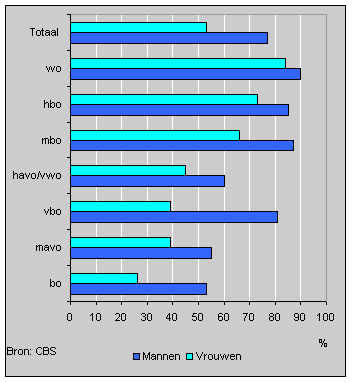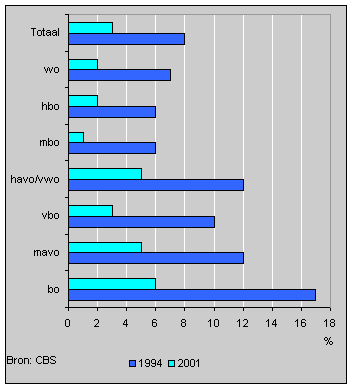Unemployment falls substantially among lower education

Sixty-five percent of all 15-64 year-olds had a paid job in 2001. People with higher education are more likely to have a job than those with lower education. However, since 1994 unemployment fell fastest for people with lower levels of education. Among people who have only primary school education, unemployment fell from 17 percent in 1994 to 6 percent in 2001.
Labour participation of 15-64 year-olds by sex, 2001

Higher educated: more likely to have a job
People with a high level of education are more likely to be active on the labour market. Nine out of ten university graduates have a job, compared with four out of ten people with primary school education only.
Lower educated women in particular less likely to work
For all levels of education the labour participation of women is lower than among men. The differences are largest among women and men with a pre-vocational training and smallest among university graduates.
Since 1991 the differences in labour participation between men and women have diminished, particularly between those with senior vocational and vocational college education, and university graduates.
Unemployment by level of education, 1994 and 2001

Unemployment fell for all levels of education
Unemployment rose in the early nineties peaking at eight percent of 15-64 year-olds in 1994. It subsequently fell steadily to three percent in 2001. This decrease can be observed for all levels of education.
Strongest fall for lower education levels
Unemployment fell most strongly for people with only primary or secondary school education. The decreases were smaller for university graduates and people with all levels of vocational training, but these are the groups with the lowest rates of unemployment anyway. Unemployment is very low among people with senior vocational training in particular. The differences between the levels of education have continued to diminish. Unemployment among people with only primary school education is still high, at six percent.
Tanja Traag